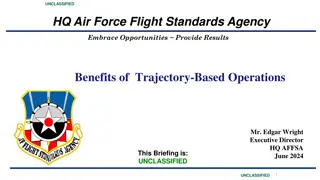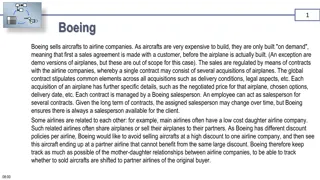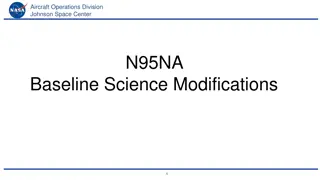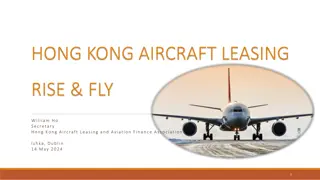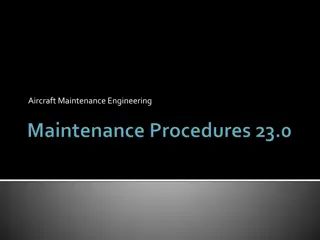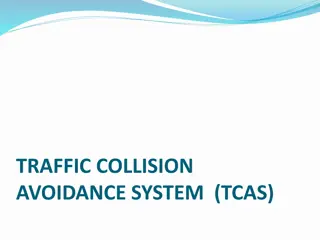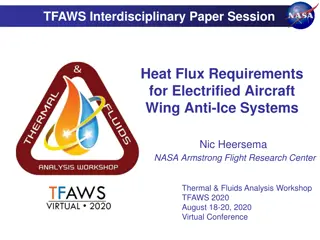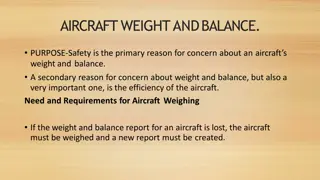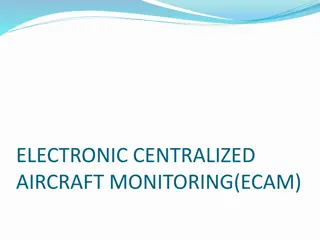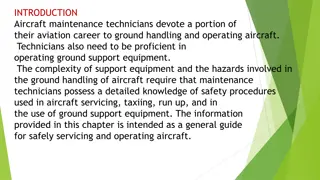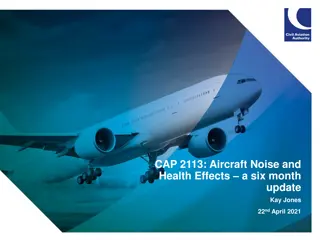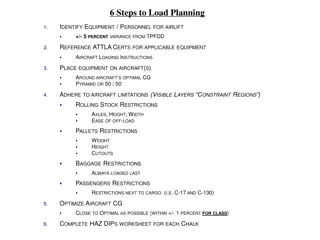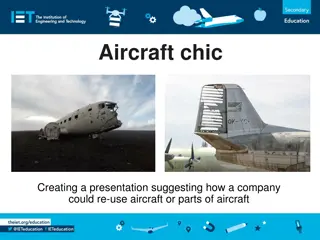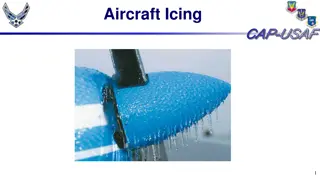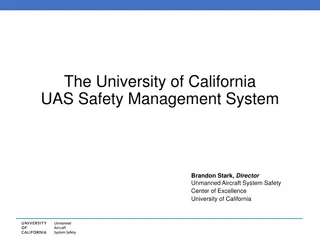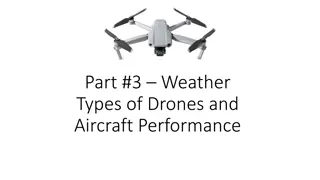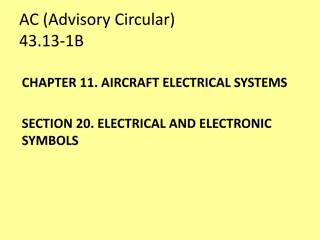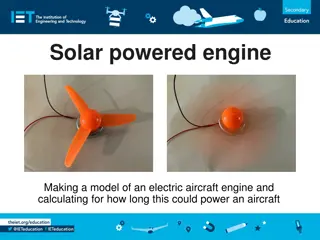Enhancing Aircraft Efficiency through Continuous Climb Operations (CCO)
The International Civil Aviation Organization (ICAO) conducted workshops on Continuous Climb Operations (CCO) to guide stakeholders like air navigation service providers, aircraft operators, airport operators, and aviation regulators. CCO involves optimizing the aircraft's vertical profile during climb, leading to fuel efficiency, environmental benefits, and operational improvements. By collaborating on airspace and procedure design, stakeholders can enhance efficiency, reduce noise and emissions, and increase airspace capacity while maintaining safety.
Download Presentation

Please find below an Image/Link to download the presentation.
The content on the website is provided AS IS for your information and personal use only. It may not be sold, licensed, or shared on other websites without obtaining consent from the author. Download presentation by click this link. If you encounter any issues during the download, it is possible that the publisher has removed the file from their server.
E N D
Presentation Transcript
International Civil Aviation Organization SIP/ASBU/2012-WP/27 Continuous Climb Operations (CCO) Saulo Da Silva Workshop on preparations for ANConf/12 ASBU methodology (Bangkok, 14-18/Nadi, 21-25 May 2012)
Intended Audience Intended audience: air navigation service providers; aircraft operators; airport operators; and aviation regulators. ICAO SIP 2012 - ASBU workshops 2
Objectives Provide guidance on continuous climb operations (CCO) to harmonize development and implementation. their ICAO SIP 2012 - ASBU workshops 3
Overview What is a CCO? Rationale Understanding CCO Procedure design Specific issues References ICAO SIP 2012 - ASBU workshops 4
What is a Continuous Climb Operations CCO is an aircraft operating technique enabled by airspace design, procedure design and facilitation by ATC, enabling the execution of a flight profile optimized to the performance of the aircraft. The optimum vertical profile takes the form of a continuously climbing path. ICAO SIP 2012 - ASBU workshops 5
Continuous Climb Operations - Rationale The climb phase uses a significant proportion of the total flight fuel and, efficiencies in this phase could provide significant economy of operation and environmental benefits in terms of both noise and emissions. ICAO SIP 2012 - ASBU workshops 6
Understanding Continuous Climb Operations (CCO) Continuous Climb Operations: Are enabled by airspace design, procedure design and ATC facilitation Requests collaboration between stakeholders Allows aircraft to attain initial cruise flight level at optimum air speed with climb engine thrust settings set throughout the climb ICAO SIP 2012 - ASBU workshops 7
Understanding Continuous Climb Operations (CCO) Increase efficiency, flight predictability and airspace capacity Reduces noise, fuel burn, emissions and controller- pilot communications Maintain safety ICAO SIP 2012 - ASBU workshops 8
Understanding Continuous Climb Operations (CCO) Ideally the departure design is such that arriving traffic is able to descend at their optimum descent profile Before any CCO trials or operations commence, the proposed implementation needs to be the subject of a local safety assessment. ICAO SIP 2012 - ASBU workshops 9
Procedure and airspace design Need an understanding of the optimum profiles for aircraft operating at the airport Avoid height and speed constraints that prevent efficient climb profiles Avoid the need to resolve potential conflicts between the arriving and departing traffic flows through ATC height or speed constraints. ICAO SIP 2012 - ASBU workshops 10
Optimum Vertical Path The optimum climb gradient will vary depending on: type of aircraft its actual weight the wind air temperature atmospheric pressure other dynamic considerations CCO should be codified as a Standard Instrument Departure (SID) so that both pilots and controllers have a fixed consistent procedure to refer to in advance. ICAO SIP 2012 - ASBU workshops 11
Conventional vs. CCO Continuous Climb Operations Conventional Departure Top of Climb Top of C limb Optimized Segment(s) Level flight segments ICAO SIP 2012 - ASBU workshops 12
Trade-offs Between CCO and CDO Consider that a level segment for an aircraft in descent would normally burn less fuel than for the same duration of level segment for an equivalent aircraft in climb. Balance will depend on local characteristics (e.g. extent of level flight in both phases, significance of noise in the areas affected) ICAO SIP 2012 - ASBU workshops 13
Collaboration Objectives should be collaboratively identified by: airspace users, ANSPs, airport operators as well as by government policy may involve local communities, planning authorities and local government ICAO SIP 2012 - ASBU workshops 14
Restrictions To not compromise safety and capacity, it may not always be possible to fly fully optimized CCO. The aim should be to maximize CCO to the extent possible, while not adversely affecting safety and/or capacity. ICAO SIP 2012 - ASBU workshops 15
Restrictions Factors such as other traffic flows, terrain, restricted airspace, aircraft performance, and noise abatement requirements will all serve to modify the design of the theoretical most efficient path, often preventing the realization of the shortest path or the most efficient climb. ICAO SIP 2012 - ASBU workshops 16
Basic CCO Allows for unrestricted climb rates for all aircraft Requires a significant amount of vertical airspace be set aside to protect the climb May also extend the route in order to give lower performing aircraft the distance necessary to clear obstacles ICAO SIP 2012 - ASBU workshops 17
Enhanced CCO Design with multiple climb gradients Profile view Top view ICAO SIP 2012 - ASBU workshops 18
Specific issues Airspace/procedure design Departure route designed to allow the crossing of other flows of traffic to one of more runways and one or multiple airports in the Terminal system, at ranges from the runway(s) that the crossing traffic flows will be naturally separated by height when climbing or descending along their optimum profile. ICAO SIP 2012 - ASBU workshops 19
Specific issues Flight operation Unrestricted climb to cruise flight level with no speed restrictions is also desirable but may not be achievable Pilot s ability to conduct a CCO depends also on the ATC clearance to be followed, either tactically or by published procedures. ICAO SIP 2012 - ASBU workshops 20
Specific issues ATC techniques Execution of published CCO requires flexible airspace design and sectorisation with sufficient room to allow the aircraft to ascend in accordance with the parameters computed by the FMS. ICAO SIP 2012 - ASBU workshops 21
References Doc 4444 PANS-ATM Doc 9426 - Air Traffic Services Planning Manual Doc 9613 Performance-based Navigation (PBN) Manual Doc 9931 - Continuous Descent Operations (CDO) Manual Continuous Climb Operations (CCO) Manual (under development) ICAO SIP 2012 - ASBU workshops 22


